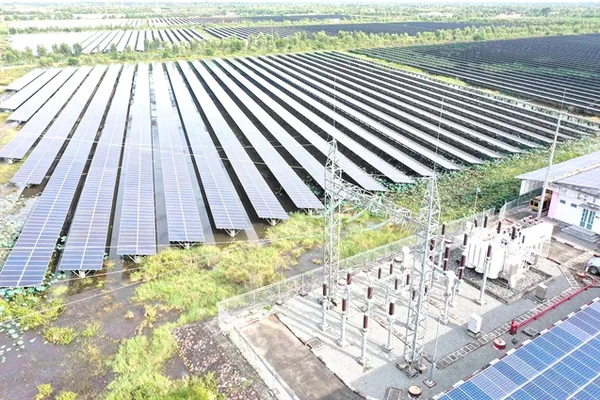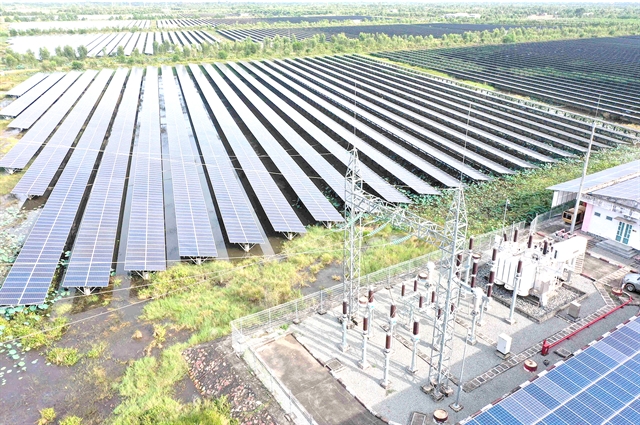 Society
Society

 |
| The Europlast solar power plant in Long An Province. — VNA/VNS Photo |
CẦN THƠ — Renewable energy is a sustainable choice for the Mekong Delta region to respond to environmental challenges, given that the country’s rice and fisheries production has lost up to US$300 million to prolonged drought and extreme salt intrusion.
According to the annual Mekong Delta Economic Report 2022 conducted by the Cần Thơ branch of the Việt Nam Chamber of Commerce and Industry (VCCI), the region boasts huge potential for development of renewable energy, especially wind, solar and biomass power. Meanwhile, national renewable energy development plans through 2035 estimate that more than 68,600 MW of wind power and 31,500MW of solar power could be generated in the region.
VCCI experts suggest the Mekong Delta capitalise on its potential and the nation’s priority for renewable energy development to shift to new renewables, helping bolster the local economy, reduce carbon footprints and lessen dependence on imported materials.
With an ambitious target of turning the region into an energy hub, many localities have proposed various projects under the National Power Development Plan VIII.
Despite having no renewable energy projects yet, Kiên Giang Province is looking into 15 potential solar energy projects with a total capacity of 2,427MWp, 12 of which, with a combined capacity of 1,715 MWp, have been proposed to the Ministry of Industry and Trade.
Deputy Director of the provincial Agriculture Extension Centre Lê Văn Dũng said that solar energy has advantages over fossil fuels as it helps reduce environmental pollution, and establishes a better environment that ensures stable production for farmers.
Meanwhile, Director of the Department of Industry and Trade of Hậu Giang Province Nguyễn Quốc Toàn said the locality has 129-MW solar power, 4,670-MW wind power and 96-MW biomass power. He recommended development of renewable energy projects to the relevant authorities, and discussed strategies to carry out the National Power Development Plan VIII over the next several years.
Since power demand is expected to increase sharply until 2050, VCCI experts said Mekong Delta localities need to update, build forecasts, evaluate potential for electricity projects and pen long-term plans to create favourable conditions for developing the supply chain and supporting industry to increase production values.
Localities should also work to attract international partners, enterprises and skilled workers so as to take full advantage of the use of renewables, they said.
According to Dr. Nguyễn Anh Tuấn, former Director of the renewable energy centre under the Ministry of Industry and Trade’s Institute of Energy, Việt Nam has installed a total power capacity of 80,704 MW, ranking second in ASEAN and 23rd worldwide, of which 20.5 per cent is from solar energy.
Solar power, given its cheap price, should be prioritised for development. However, it faces such challenges as high investment costs, a lack of suitable infrastructure and instability of the energy source due to weather conditions, which will need to be addressed.
He suggested the Government provide concessional loans for investors to encourage the development of solar energy. — VNS




